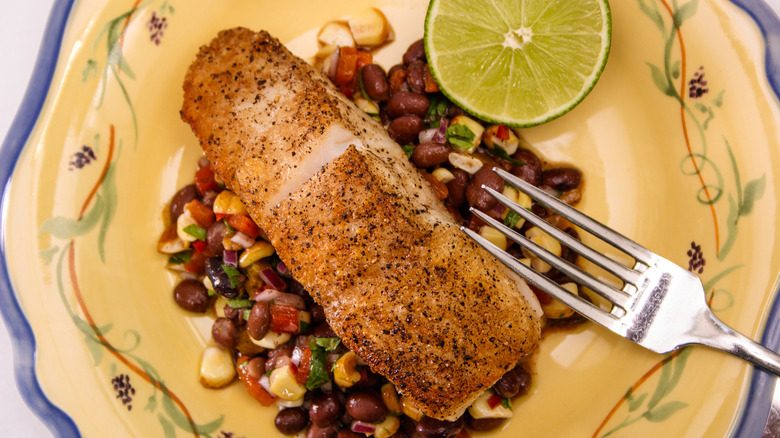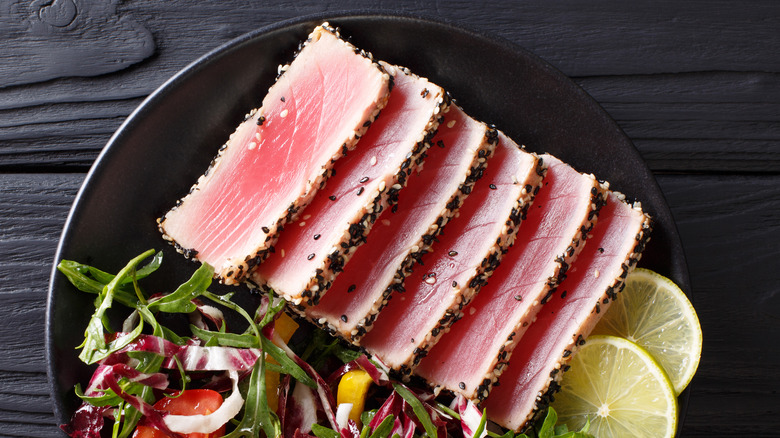The Knife Hack For Checking The Doneness Of Fish
Fish is delicious no matter how it's cooked, with the caveat that it's, you know, actually cooked. You couldn't be blamed for thinking that checking the doneness of a lovely grilled swordfish steak or pan-seared rockfish filet involves its partial obliteration through flaking or outright cutting in half. That's actually not the case. All you really need to tell if your fish is cooked through is a thin-bladed knife and the ability to count: if the blade is still cold after being inserted into the thickest part of the fish for three full seconds, it's still rare in the center.
In fact, flaking cooked fish isn't a great method for testing doneness anyway, because any fish that flakes is generally overcooked. Some types of fish are more delicious if they're not cooked all the way through. As it turns out, the knife trick is a pretty reliable way of knowing what temperature the center of your fish has reached, no matter how you like it.
One Mississippi, two Mississippi, three Mississippi
Typically, filets of firm, white-fleshed fish like halibut, flounder, and tilapia are best when cooked right through, so you'll want your knife blade to come out hot. Wild-caught varieties like sockeye salmon or steelhead trout are more flavorful when cooked medium rare, because doing so yields a melty, moist middle. As you might have guessed, this means your knife blade should come out warm, not hot. (As always, the deciding factors here should always be your personal preference modified by the quality of your fish.)
What if the blade comes out cold to the touch? Is that a bad thing? Not if you're preparing ahi tuna steaks, which many people prefer seared on the outside and rare on the inside. You can skip the knife trick if you happen to have a meat thermometer — just remember that the optimal internal temperature for most white fish is around 130 degrees Fahrenheit. Either way, the days of defacing your dinner are over.

